Saudi Arabia - part 1
Wild camping at “Judah’s Thumb”
Saudi Arabia is enormous, with vast rocky and desert flat stretches. There were areas of exquisite beauty, and also a lot of empty space to cover. It was not our favorite Arabian Peninsula country. The culture felt less welcoming to us, and the main cities did not have the sparkling charm and cultural attractions that we found in UAE or Qatar.
The country is a stricter Muslim country than some of its neighbors, women and men seemed to live more separate lives. Cafes and wilderness spots are filled with groups of men enjoying camaraderie and social time but the women are more out of sight. Saudi Arabian women commonly wore both the abaya (floor length black robe) hijab (head covering) and the niqab (the veil which covers all of her face but the eyes). The men wore mostly white robes with an arafat artistically wrapped on their heads.
Saudi Arabia only officially opened to tourism in 2019, fairly recently. Under the leadership of Crown Prince Mohammed bin Salman, the country is pursuing economic diversity which includes hopes for tourism revenue. Similar to the rest of the peninsula much of the population is foreign workers but in Saudi Arabia it is lower at 41% non-Saudis. The strict society meant that we always felt safe even as non-Muslims.
Our 2400 mile route through Saudi Arabia
Our time in the country was probably colored by an uncomfortable situation the first night in the country. After crossing the border, we set up for the night in an empty public beach in the eastern town of Al Batha. Two off duty Naval Captains stopped by and all seemed friendly, they offered us fresh fish and we made them coffee. But over the course of a couple of hours it got weird, one of them cornered Dawn in the camper when Andy was outside and started asking inappropriate questions - all through Google translate in Arabic which adds another strange layer. He was asking “why aren’t you wearing shorts? do you have any pictures of yourself wearing shorts? “-as we were passing phones back and forth to translate he even started looking through her pictures. There was a lot more awkwardness and when she realized it was definitely crossing the line from friendly curiosity to inappropriate (he asked for a kiss) she called out to Andy outside and he backed off. She asked him to leave and he did.
The whole incident was an eye opener for us in terms of how we may appear to the local culture, how women are treated, and where we might be vulnerable. For Dawn, she felt somehow sullied, hard to describe but definitely disrespected. Very different from the automatic “hello mami” she experienced in Africa which always felt like a positive recognition of her as a woman and a mother figure.
First night in Saudi Arabia, empty beach parking area
Despite being mostly desert, free clean water was always easy to find in the Arabian Peninsula, we always ran it through our filter anyway just in case
Another beach camping spot. It was typical for military or police patrols on duty to stop by in even remote beach locations, after that first night always very professional, asking to see our passports and saying it was fine to spend the night.
After a few days in to Saudi Arabia, Andy was feeling sick, Dawn had been sick a few days before in Bahrain. We headed into the desert for him to sleep us off. Thankfully, we had COVID test kits in our first aid bag and decided to test him. He was positive so we quarantined ourselves.
Driving across the desert to Juda’s Thumb to stay away from people
Andy’s position in the camper for a few days
Then once we were recovered and safe to be around people we headed to the capital, Riyadh.
Masmak Fort, built 1865 as the main base to defend Riyadh
And on the other end of the architectural spectrum, Skybridge, the modern landmark on the Riyadh skyline
We hit a few tourist highlights, but mostly spent our time in the city re-supplying after our desert quarantine. Riyadh was difficult to navigate and we were learning about the peculiarities of Saudi Arabian road design. We came to know the country as U-turn central. Roads were divided with concrete meridians and the most common way of changing direction was by making U-turns. On the one hand, opportunities for U-turns were frequent and sign posted. On the other hand, everyone had to make U-turns to get to their destination, from motorbikes to semi trucks so U-turn lanes backed up and impeded traffic flow. We have never seen so many U-Turn signs. Google and Open Street Maps had the worst navigation interfaces in Saudi Arabian cities of anywhere we had ever been.
Exploring “The Edge of the World” outside Riyadh
Our journey to “the Edge of the World” was one of our favorite experiences in Saudi Arabia- dramatic cliffs, panoramic views and the ability to camp wherever you were brave enough to.
Also some great hiking!
We enjoyed the setting, the sunset, the hiking and, initially our camp. But we made the rookie mistake of setting up too close to the cliff’s edge and by 10pm our camper was rocking in 30mph winds. We have learned that the short term pain of popping down and moving camp is usually the better option over the slow agony of a sleepless night. So we moved inland, tucked behind a dune and had blissful quiet. Sometimes we learn our lessons over time.
The next stop for us was the 15th century Unesco site At-Turaif, also outside of Riyadh. The capital of the first Saudi dynasty, we received a fantastic history lesson about the early rulers from the house of Saud and toured their palaces, mosques and ancient streets.
Palace at At-Turaif
Exploring the ruins of At-Turaif
Typical Saudi Arabian male headwear, beautifully wrapped
We left At-Turait filled with new knowledge and headed west to see what else we could find to explore.
Wild camp in the rocky desert (hiding behind a hill to escape the wind)
Our next urban stop was Jeddah, the second largest city in Saudi Arabia. A port city on the Red Sea, it feels industrial and commercial but also has a charming old quarter. Jeddah is also a major gateway to pilgrims visiting Mecca (Makkah) and Medina. The holy city of Mecca, birthplace to Islam is not open to non-Muslims, there is even a separate highway skirting the city for non-Muslims.
Wandering the cobbled streets of the old city in Jeddah
We were fascinated by the beautiful “mashrabiya” or wooden screened boxes, designed for a way for women to be able to view activity on the street without being seen by outsiders.
And we always love the old doors


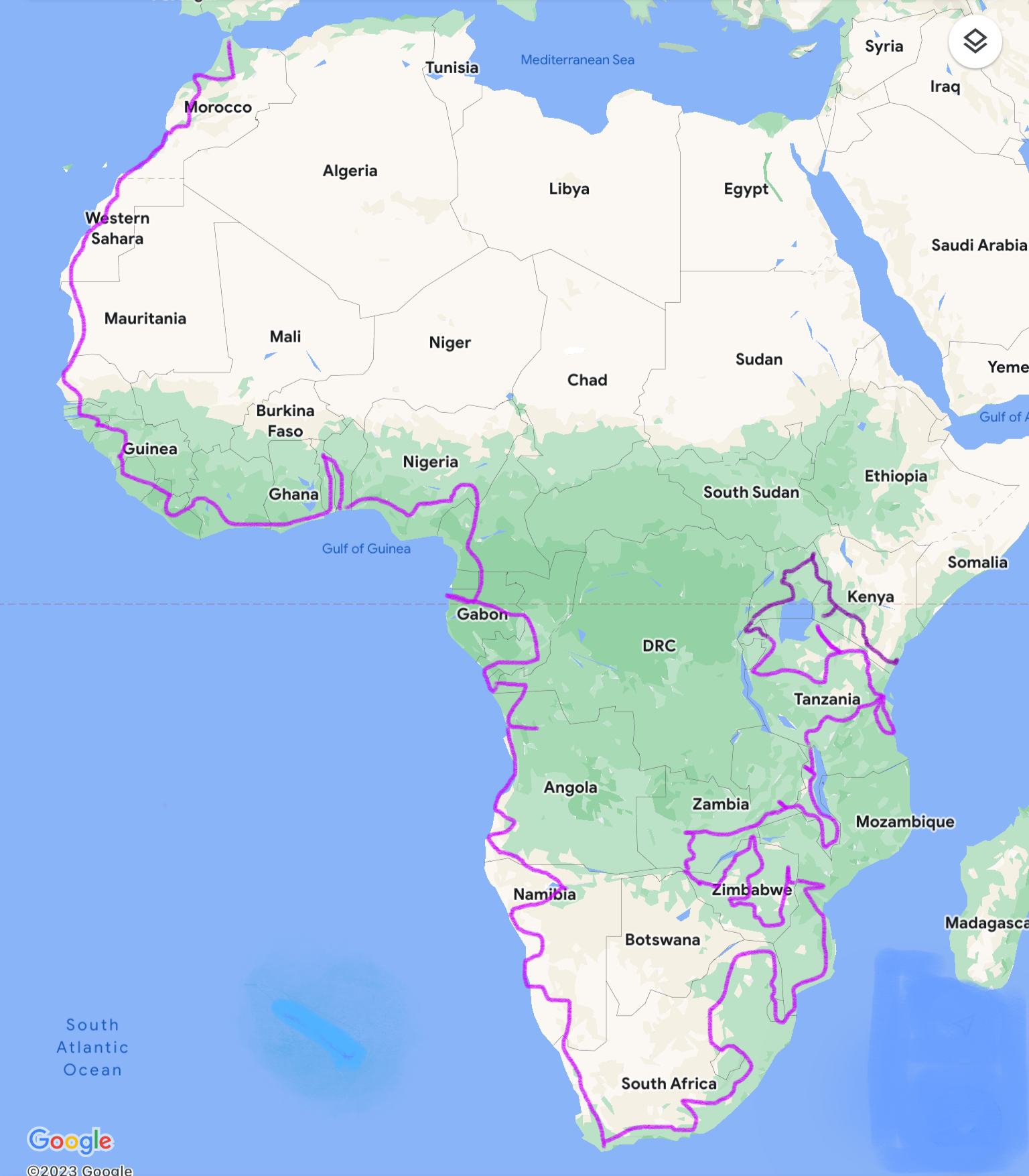

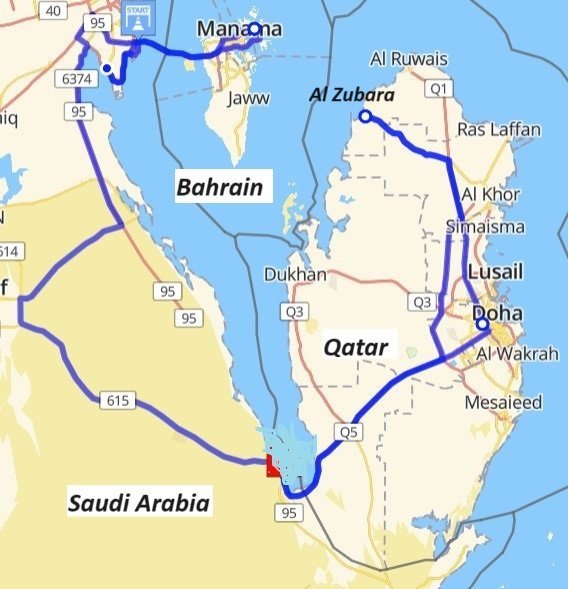
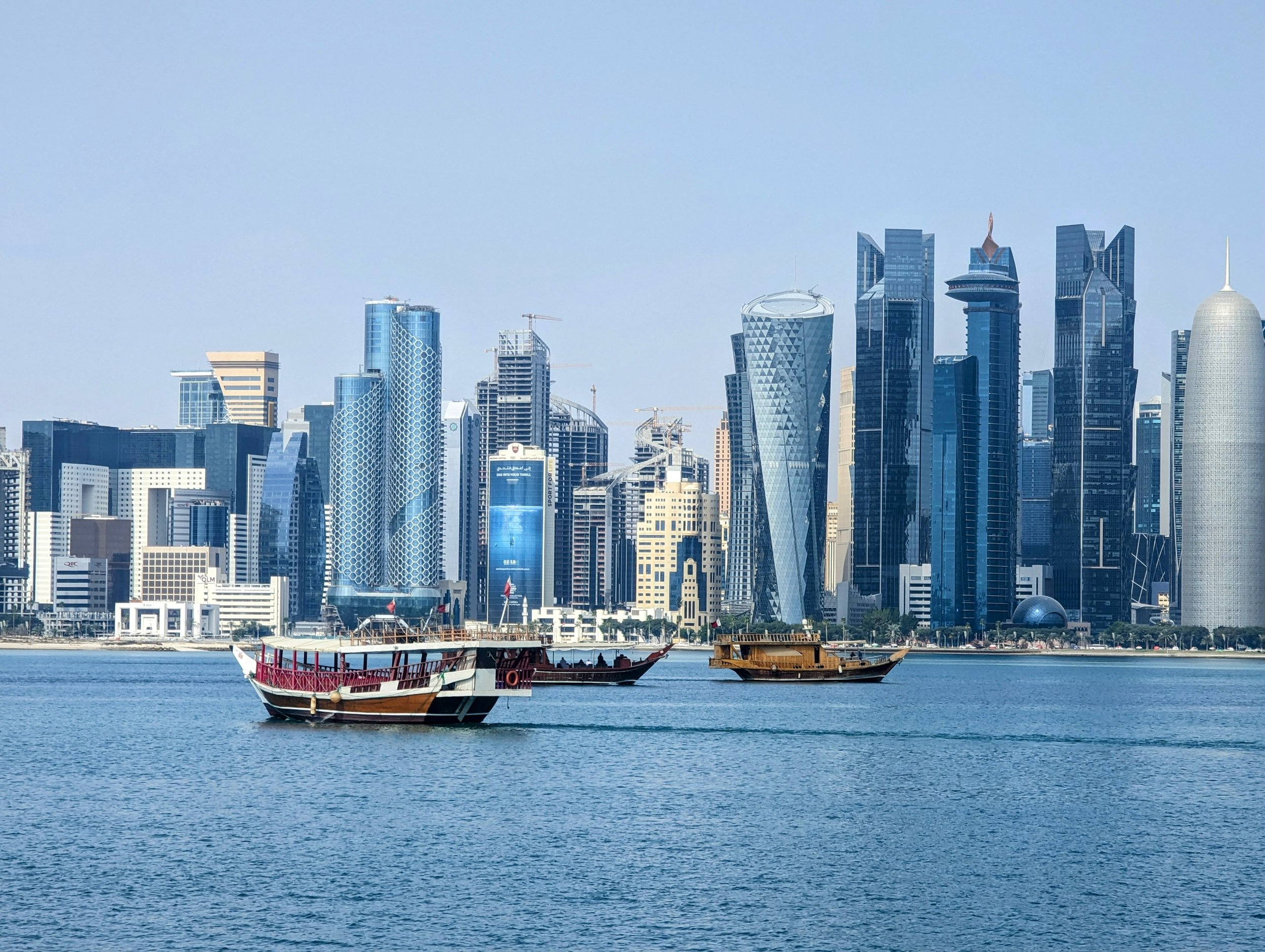

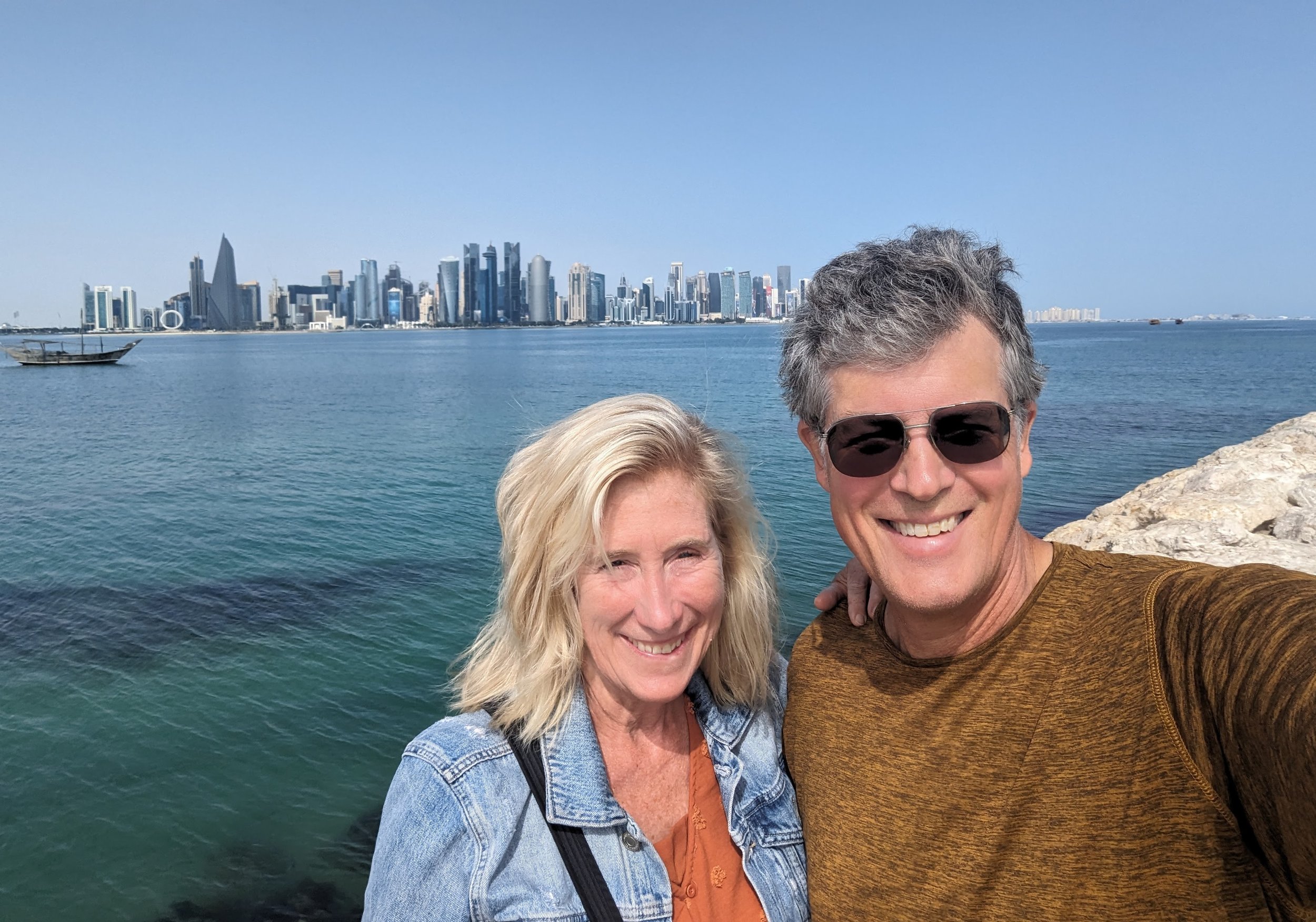
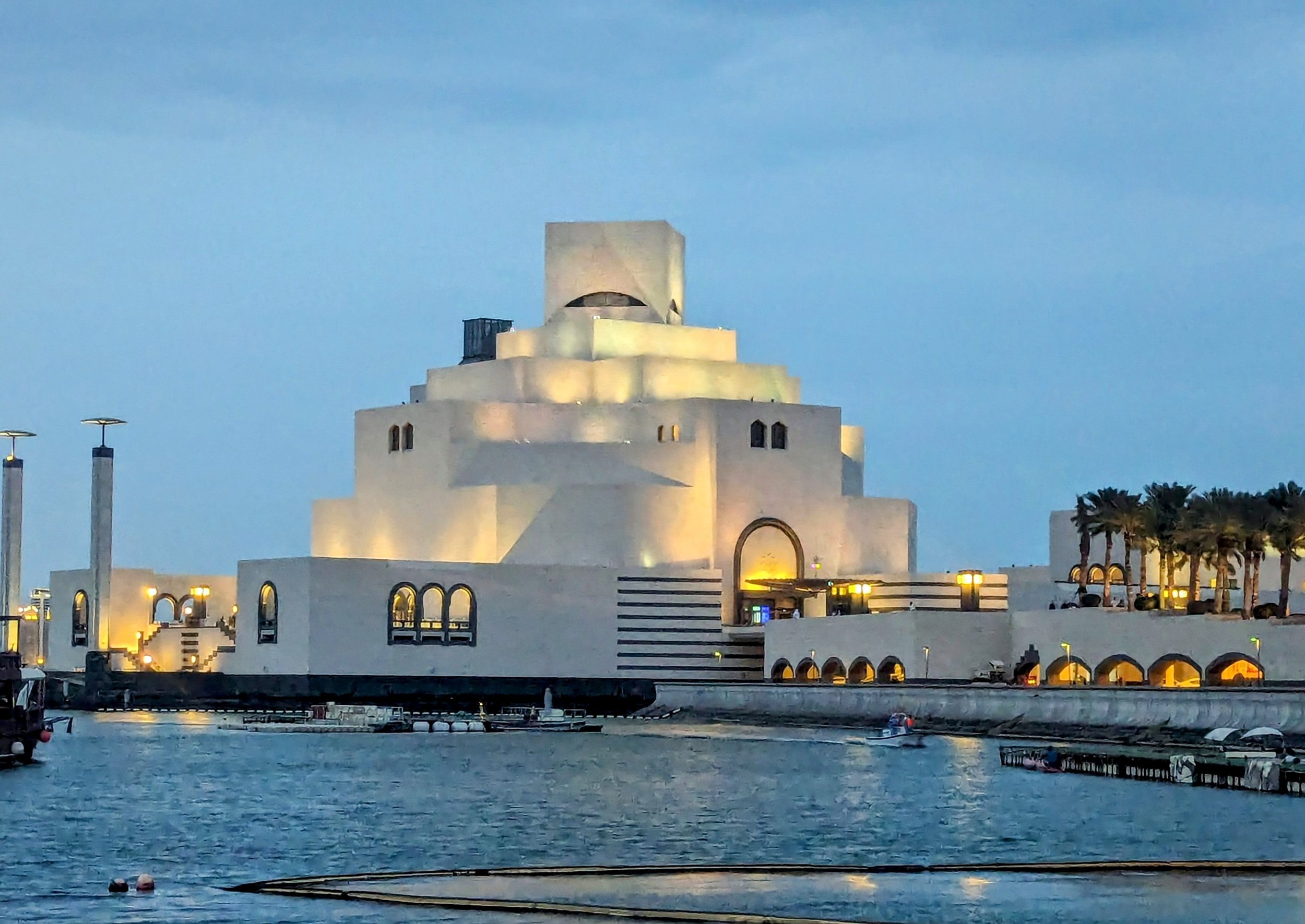
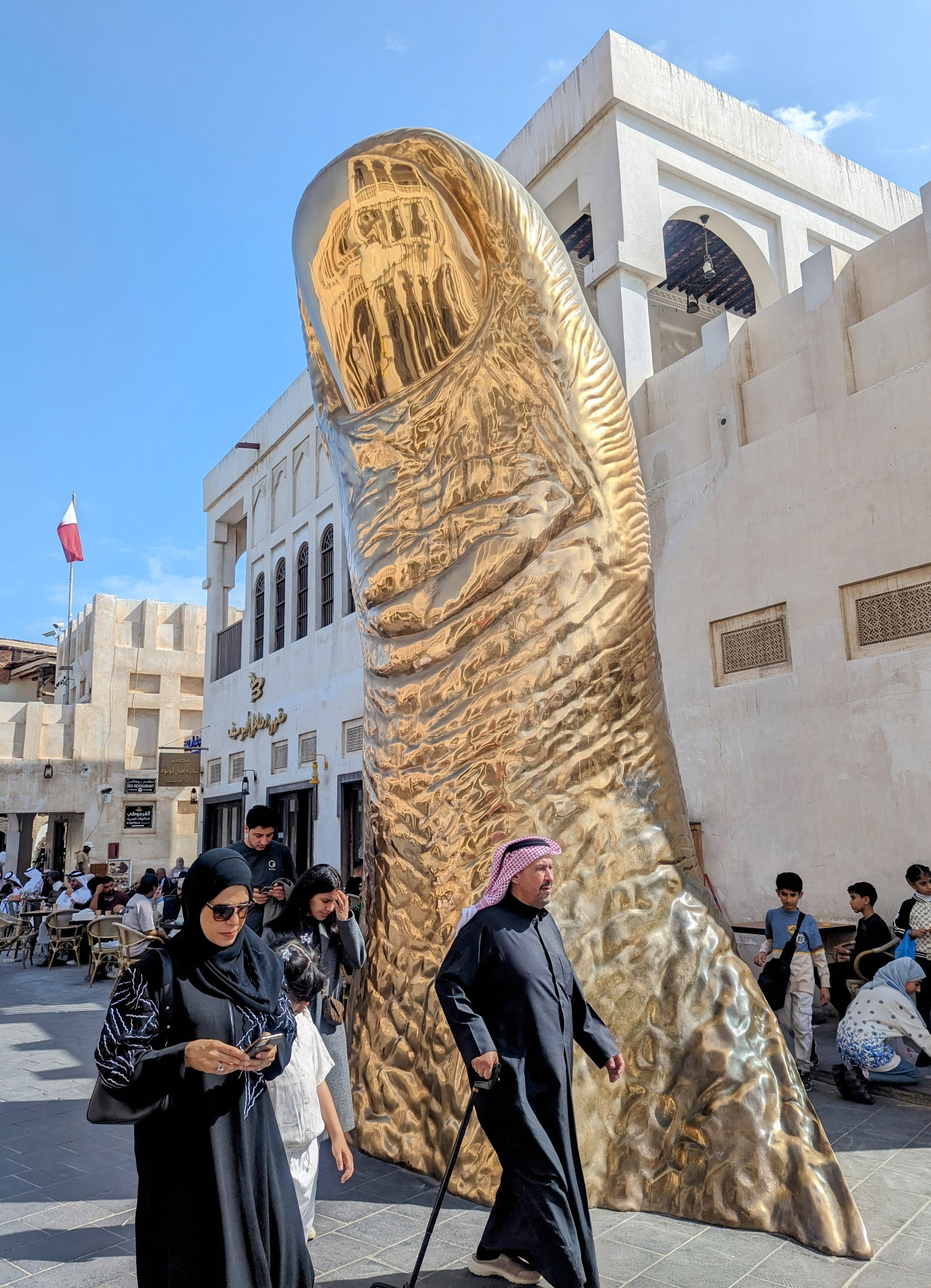

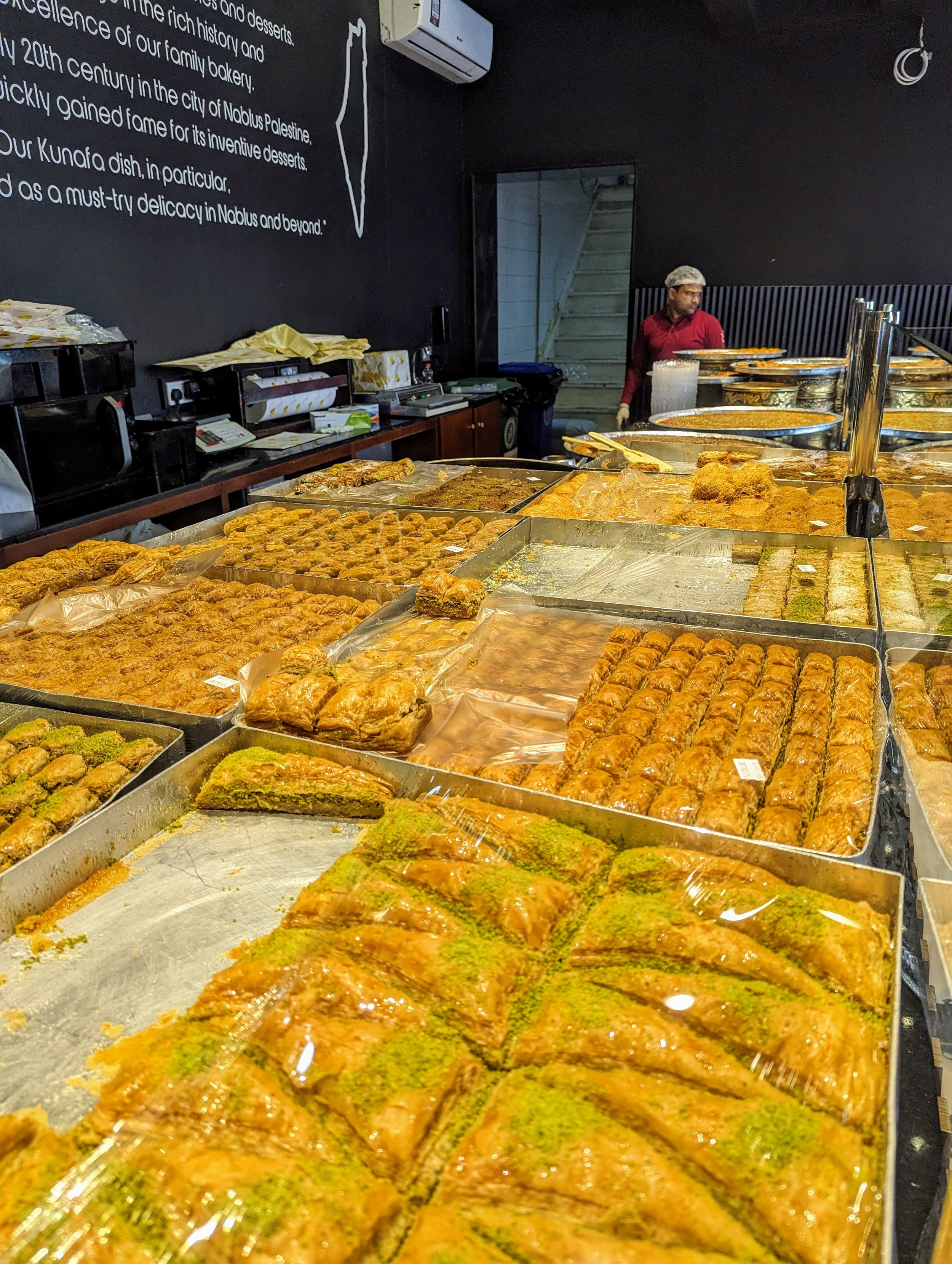

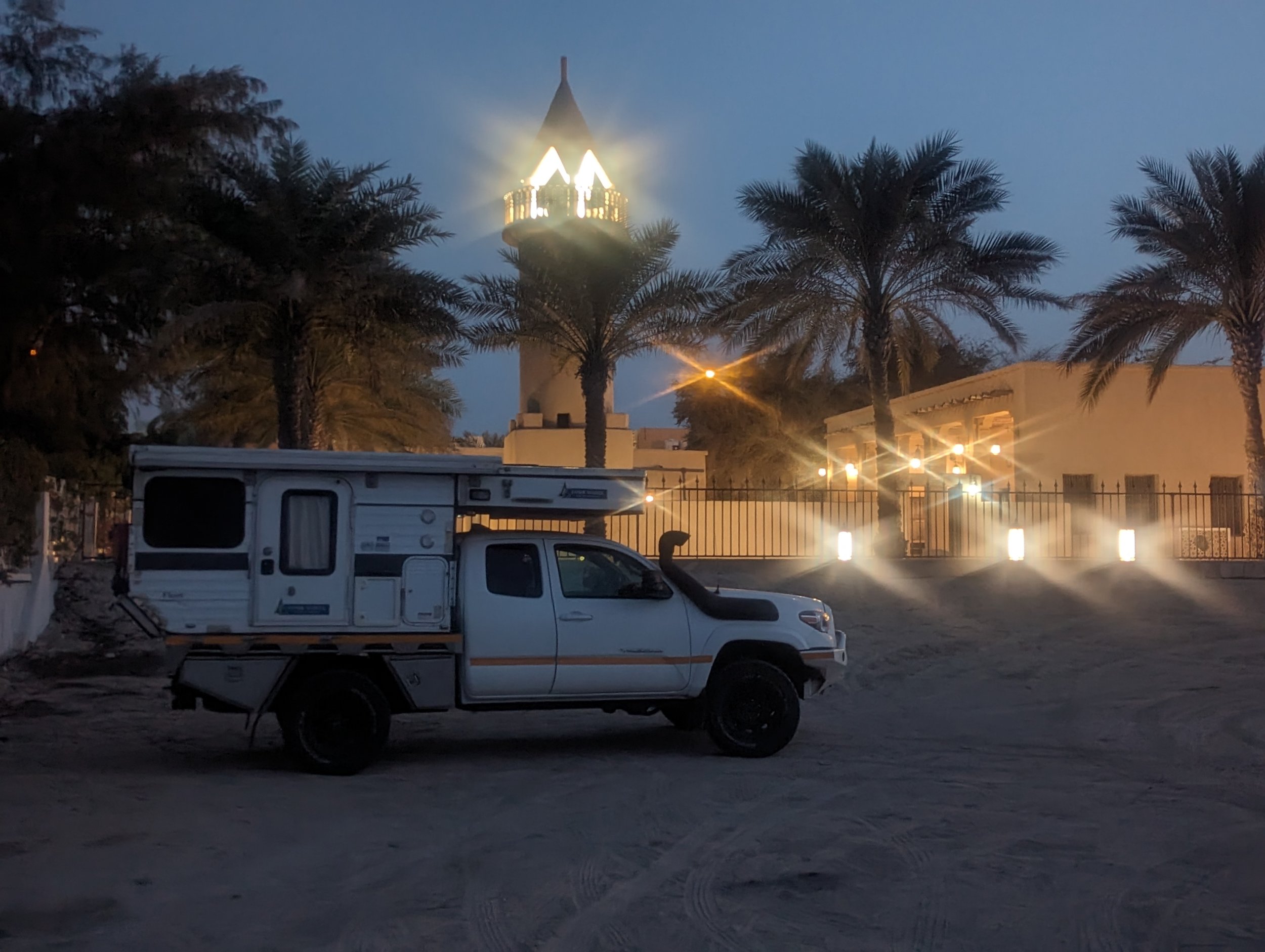

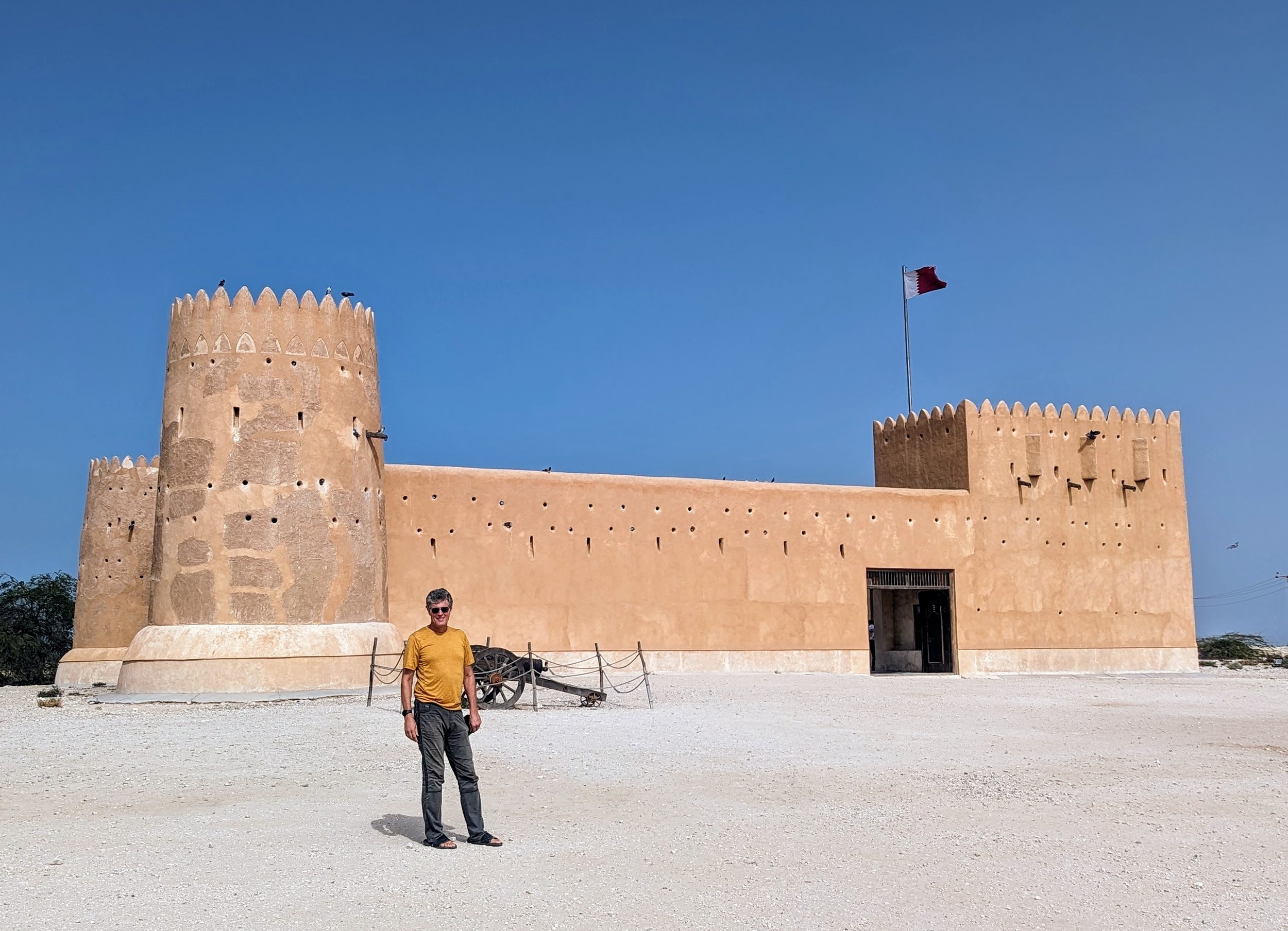
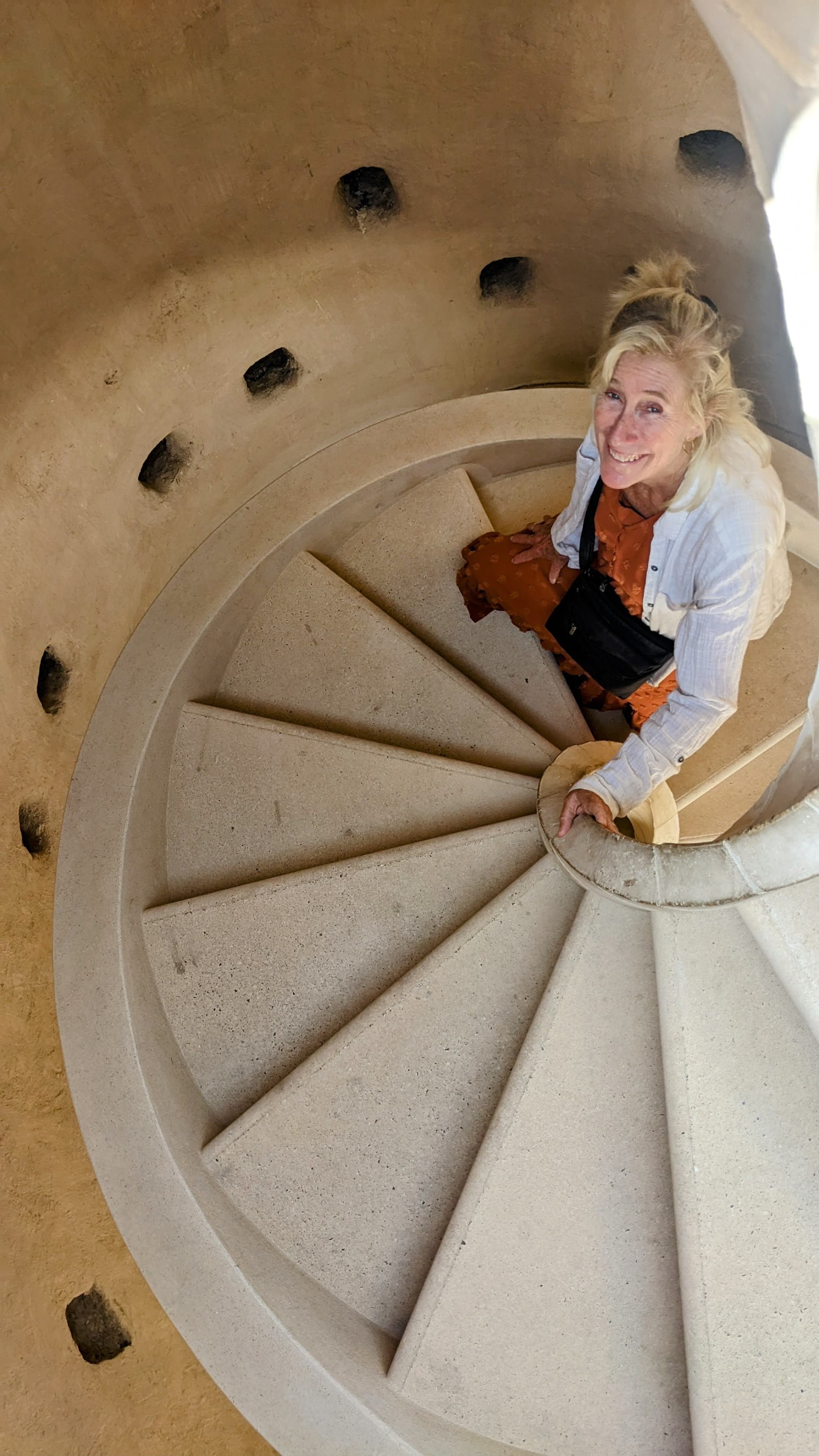


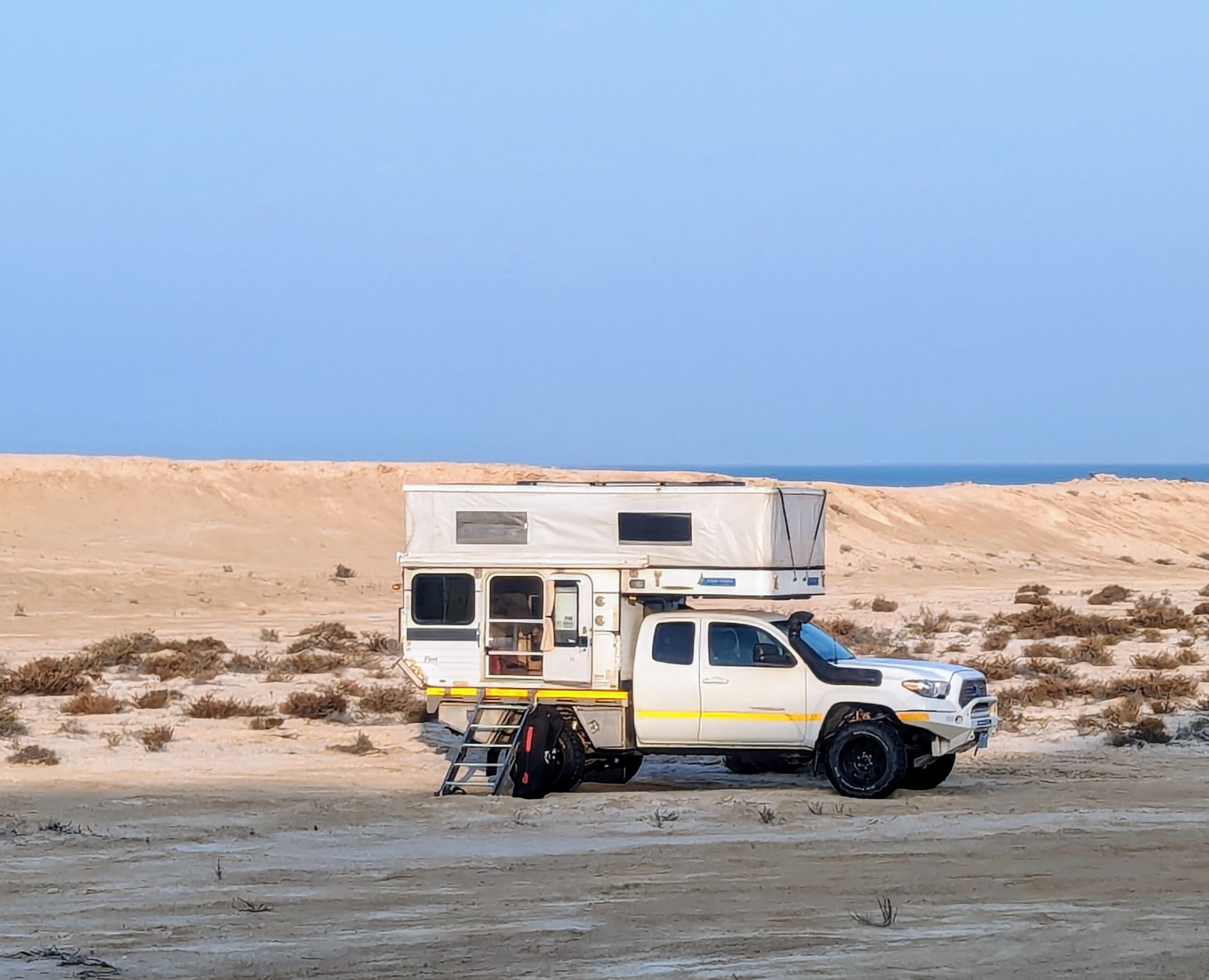
![[IMG] [IMG]](https://images.squarespace-cdn.com/content/v1/5eb85920d2ae880e0ff1526f/56f304cd-9823-40d5-a6d3-cb5f243dcad1/PXL_20240202_093126790.MP.jpg)
![[IMG] [IMG]](https://images.squarespace-cdn.com/content/v1/5eb85920d2ae880e0ff1526f/6a1d1135-e09b-4b7d-b8f7-f1b73767d838/PXL_20240202_101749765.jpg)
![[IMG] [IMG]](https://images.squarespace-cdn.com/content/v1/5eb85920d2ae880e0ff1526f/b5c9d562-d338-4887-9138-f41e8e83e3a2/PXL_20240202_101619248%7E2.jpg)
![[IMG] [IMG]](https://images.squarespace-cdn.com/content/v1/5eb85920d2ae880e0ff1526f/cb6d47c9-76ef-4af0-afc2-bd4a13179b51/PXL_20240204_110952802.jpg)
![[IMG] [IMG]](https://images.squarespace-cdn.com/content/v1/5eb85920d2ae880e0ff1526f/eac4fdaf-ed64-4c3e-8e02-b689c296a9ee/PXL_20240204_113659039%7E2.jpg)
![[IMG] [IMG]](https://images.squarespace-cdn.com/content/v1/5eb85920d2ae880e0ff1526f/19e5e69f-f0cd-4e07-ab9c-b2132f73e0f0/PXL_20240205_070207908%7E2.jpg)
![[IMG] [IMG]](https://images.squarespace-cdn.com/content/v1/5eb85920d2ae880e0ff1526f/d3e835ba-bef9-42b9-9fe2-f51302df2f9d/PXL_20240204_103331159%7E2.jpg)
![[IMG] [IMG]](https://images.squarespace-cdn.com/content/v1/5eb85920d2ae880e0ff1526f/50779d7d-52c3-4c5f-bec9-20cbfe72dd74/PXL_20240205_084218653.jpg)
![[IMG] [IMG]](https://images.squarespace-cdn.com/content/v1/5eb85920d2ae880e0ff1526f/5fdf2dc8-8c48-40c5-8ee6-b5a8592b33e1/PXL_20240205_081344876.jpg)
![[IMG] [IMG]](https://images.squarespace-cdn.com/content/v1/5eb85920d2ae880e0ff1526f/711d7a5a-df77-474b-9c75-7a99a0c57532/PXL_20240205_081436385.jpg)
![[IMG] [IMG]](https://images.squarespace-cdn.com/content/v1/5eb85920d2ae880e0ff1526f/40e5be96-ad37-4f5f-a9fd-cee072ef84c3/PXL_20240205_081853423.jpg)
![[IMG] [IMG]](https://images.squarespace-cdn.com/content/v1/5eb85920d2ae880e0ff1526f/d25491c6-0242-4437-834a-652d51d15948/PXL_20240205_083301129.jpg)
![[IMG] [IMG]](https://images.squarespace-cdn.com/content/v1/5eb85920d2ae880e0ff1526f/4546d2a5-6576-4ecd-b25e-d3679b9754c9/PXL_20240205_090905434.jpg)
![[IMG] [IMG]](https://images.squarespace-cdn.com/content/v1/5eb85920d2ae880e0ff1526f/fb6a7571-cb2f-4171-9473-25d34cc3f3ef/PXL_20240205_112345756%7E2.jpg)
![[IMG] [IMG]](https://images.squarespace-cdn.com/content/v1/5eb85920d2ae880e0ff1526f/f337eae1-50ca-46e0-94cf-9f6b44923295/PXL_20240205_112718506%7E2.jpg)
![[IMG] [IMG]](https://images.squarespace-cdn.com/content/v1/5eb85920d2ae880e0ff1526f/d51ce89d-2d1e-47a4-a9a7-cd21b4976d53/PXL_20240205_112534440%7E2.jpg)
![[IMG] [IMG]](https://images.squarespace-cdn.com/content/v1/5eb85920d2ae880e0ff1526f/fb1626a0-1d3e-4055-b807-939e05334578/PXL_20240206_141252580.jpg)
![[IMG] [IMG]](https://images.squarespace-cdn.com/content/v1/5eb85920d2ae880e0ff1526f/1cc17bb1-efa8-422a-8fc6-7b8fbb7ed3b2/Saudi.jpg)
![[IMG] [IMG]](https://images.squarespace-cdn.com/content/v1/5eb85920d2ae880e0ff1526f/5d38cda2-afa4-4333-ba58-71952e151ab9/PXL_20240129_041017701.jpg)
![[IMG] [IMG]](https://images.squarespace-cdn.com/content/v1/5eb85920d2ae880e0ff1526f/7512d858-380e-4994-ac75-1c0a9ed319ea/PXL_20240129_082648513.jpg)
![[IMG] [IMG]](https://images.squarespace-cdn.com/content/v1/5eb85920d2ae880e0ff1526f/d8dd6a69-aa06-4251-a38a-34f58a25a333/PXL_20240201_141251772.jpg)
![[IMG] [IMG]](https://images.squarespace-cdn.com/content/v1/5eb85920d2ae880e0ff1526f/de41d470-d7e5-459c-909e-09113ba08bb2/PXL_20240206_131032936.jpg)
![[IMG] [IMG]](https://images.squarespace-cdn.com/content/v1/5eb85920d2ae880e0ff1526f/45f6e39f-e241-4516-b843-dc0fa38dbf49/PXL_20240206_143837591_exported_927_1707471261390%7E2.jpg)
![[IMG] [IMG]](https://images.squarespace-cdn.com/content/v1/5eb85920d2ae880e0ff1526f/ae9644fa-551e-4d55-b583-ab9a3397f29e/PXL_20240209_122018210_exported_583_1707541523761.jpg)
![[IMG] [IMG]](https://images.squarespace-cdn.com/content/v1/5eb85920d2ae880e0ff1526f/e0ac92c9-d6e0-43f9-ba04-b0a0869ba4b3/PXL_20240209_132141300%7E2.jpg)
![[IMG] [IMG]](https://images.squarespace-cdn.com/content/v1/5eb85920d2ae880e0ff1526f/c7abb4c3-d86d-4e0e-a29a-0ac8b0e5d472/PXL_20240210_121511549%7E2.jpg)
![[IMG] [IMG]](https://images.squarespace-cdn.com/content/v1/5eb85920d2ae880e0ff1526f/96f3570e-b6ca-47ce-bdf9-f5d22c534c0b/PXL_20240211_070956536%7E2.jpg)
![[IMG] [IMG]](https://images.squarespace-cdn.com/content/v1/5eb85920d2ae880e0ff1526f/b046e7ac-885f-420b-a833-6b72710480ea/PXL_20240211_071327036.MP%7E2.jpg)
![[IMG] [IMG]](https://images.squarespace-cdn.com/content/v1/5eb85920d2ae880e0ff1526f/a18002a7-6839-4ce1-87df-7bdbfe0453e2/PXL_20240211_092956178%7E2.jpg)
![[IMG] [IMG]](https://images.squarespace-cdn.com/content/v1/5eb85920d2ae880e0ff1526f/697bda25-ec24-4b47-969d-58734996bda8/PXL_20240211_101234797.MP%7E2.jpg)
![[IMG] [IMG]](https://images.squarespace-cdn.com/content/v1/5eb85920d2ae880e0ff1526f/4981b861-f99f-4d59-a1a6-26f4b8aceb09/PXL_20240211_110103244%7E2.jpg)
![[IMG] [IMG]](https://images.squarespace-cdn.com/content/v1/5eb85920d2ae880e0ff1526f/b91692a9-810d-42d5-89f8-7e31d94db48a/PXL_20240211_110130089%7E2.jpg)
![[IMG] [IMG]](https://images.squarespace-cdn.com/content/v1/5eb85920d2ae880e0ff1526f/33cecd73-aa81-41b6-a233-bf2e524e8e4f/PXL_20240212_044557046%7E2.jpg)
![[IMG] [IMG]](https://images.squarespace-cdn.com/content/v1/5eb85920d2ae880e0ff1526f/22d092fe-1462-4709-a122-e91caafbb68a/PXL_20240214_114423077%7E2.jpg)
![[IMG] [IMG]](https://images.squarespace-cdn.com/content/v1/5eb85920d2ae880e0ff1526f/2a03a840-c56a-485f-9409-7b905fce53a7/PXL_20240214_115022473%7E2.jpg)
![[IMG] [IMG]](https://images.squarespace-cdn.com/content/v1/5eb85920d2ae880e0ff1526f/ef72341d-0f76-4a61-902b-cb093d2ea346/PXL_20240214_114756420%7E2.jpg)
![[IMG] [IMG]](https://images.squarespace-cdn.com/content/v1/5eb85920d2ae880e0ff1526f/4141b352-490e-4b1b-ae8a-a0972f5e0bfb/PXL_20240214_114001014%7E2.jpg)
![[IMG] [IMG]](https://images.squarespace-cdn.com/content/v1/5eb85920d2ae880e0ff1526f/fc7799bf-807f-48b3-ae4f-873e9a1707de/PXL_20240216_133921861%7E3.jpg)
![[IMG] [IMG]](https://images.squarespace-cdn.com/content/v1/5eb85920d2ae880e0ff1526f/f48acb96-1ed1-483e-a18d-f8c60e9a14ad/PXL_20240217_120718906%7E2.jpg)
![[IMG] [IMG]](https://images.squarespace-cdn.com/content/v1/5eb85920d2ae880e0ff1526f/e418cc45-1ff9-4d4d-afcb-2e21dd63fcd6/PXL_20240217_122016537%7E2.jpg)
![[IMG] [IMG]](https://images.squarespace-cdn.com/content/v1/5eb85920d2ae880e0ff1526f/5430a563-3db2-4389-992f-72599a297bf8/PXL_20240217_122121422%7E2.jpg)
![[IMG] [IMG]](https://images.squarespace-cdn.com/content/v1/5eb85920d2ae880e0ff1526f/4b75fce8-26d5-4514-ac59-9a3bf9fdb028/PXL_20240217_123741722.jpg)
![[IMG] [IMG]](https://images.squarespace-cdn.com/content/v1/5eb85920d2ae880e0ff1526f/0950dbf3-01af-4ae3-94d5-75511ad43c6e/PXL_20240217_125232362%7E2.jpg)
![[IMG] [IMG]](https://images.squarespace-cdn.com/content/v1/5eb85920d2ae880e0ff1526f/d1347adb-70d4-45f2-9118-fe74a00f71ff/PXL_20240217_140233801%7E2.jpg)
![[IMG] [IMG]](https://images.squarespace-cdn.com/content/v1/5eb85920d2ae880e0ff1526f/3ae9fd43-7444-483b-985a-d21bdd2f9f1c/PXL_20240217_144112989%7E2.jpg)
![[IMG] [IMG]](https://images.squarespace-cdn.com/content/v1/5eb85920d2ae880e0ff1526f/fc8d4e13-bdef-47e9-9bff-f9555caf3da3/PXL_20240217_144649849%7E2.jpg)
![[IMG] [IMG]](https://images.squarespace-cdn.com/content/v1/5eb85920d2ae880e0ff1526f/f51d602b-83b5-49e1-a572-c6451bdf45c3/PXL_20240217_143452536%7E2.jpg)
![[IMG] [IMG]](https://images.squarespace-cdn.com/content/v1/5eb85920d2ae880e0ff1526f/2e3ab250-20ee-4716-a34e-d2e199c755ca/PXL_20240218_091858288%7E2.jpg)
![[IMG] [IMG]](https://images.squarespace-cdn.com/content/v1/5eb85920d2ae880e0ff1526f/895dba42-41e6-48bc-9e94-6ea2241faec7/PXL_20240218_093623523%7E2.jpg)
![[IMG] [IMG]](https://images.squarespace-cdn.com/content/v1/5eb85920d2ae880e0ff1526f/fb5df91b-5f73-4b70-adae-dd62c85c7b07/PXL_20240218_094948902%7E2.jpg)
![[IMG] [IMG]](https://images.squarespace-cdn.com/content/v1/5eb85920d2ae880e0ff1526f/4a630f2b-7a22-420f-889f-3106e43ff7bf/original_9423cb0a-9cfa-4e24-9e5b-73b3ed827e36_PXL_20240218_101124582.jpg)
![[IMG] [IMG]](https://images.squarespace-cdn.com/content/v1/5eb85920d2ae880e0ff1526f/4f6b3a64-58b8-4623-813d-0fdda97f4593/PXL_20240218_102537268.jpg)
![[IMG] [IMG]](https://images.squarespace-cdn.com/content/v1/5eb85920d2ae880e0ff1526f/473a7375-27d5-40b5-8959-66081b9e8f67/PXL_20240218_102926952%7E2.jpg)
![[IMG] [IMG]](https://images.squarespace-cdn.com/content/v1/5eb85920d2ae880e0ff1526f/e84d4cb5-292a-4d65-9e95-d3cbf68253b8/PXL_20240218_125459098%7E2.jpg)
![[IMG] [IMG]](https://images.squarespace-cdn.com/content/v1/5eb85920d2ae880e0ff1526f/ec20a47a-2546-4ff7-b9db-8febd659fc71/original_a9a342fa-ebab-42b8-9c93-ac8c141d3e32_PXL_20240219_110514598.jpg)
![[IMG] [IMG]](https://images.squarespace-cdn.com/content/v1/5eb85920d2ae880e0ff1526f/5deb924a-8ebb-49a7-a702-737f874149f7/PXL_20240220_051742516%7E2.jpg)